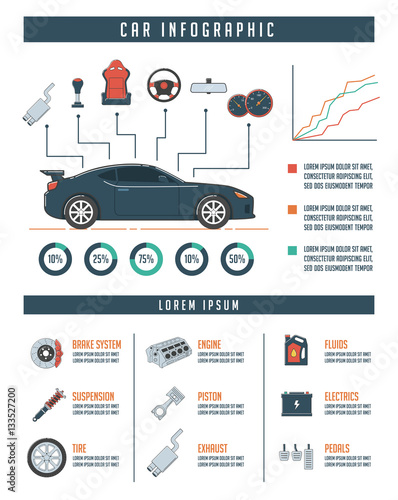Recognizing Your Car'S Warning Lights: What Do They Actually Mean?
Recognizing Your Car'S Warning Lights: What Do They Actually Mean?
Blog Article
Short Article Produced By-Kessler Crawford
When you lag the wheel, those beautiful warning lights on your control panel can be a bit bewildering. Do you know what they're trying to inform you regarding your car's health and wellness? Recognizing the relevance of these lights is important for your safety and security and the longevity of your car. So, the next time among those lights pops up, would not you intend to analyze its message properly and take the essential steps to resolve it?
Common Caution Lights and Interpretations
Determine usual caution lights in your car and understand their meanings to ensure secure driving.
The most typical warning lights consist of the check engine light, which signals problems with the engine or emissions system. If this light begins, it's critical to have your automobile examined promptly.
The oil stress warning light indicates low oil pressure, needing immediate focus to avoid engine damage.
A blinking battery light could recommend a defective billing system, possibly leaving you stranded otherwise attended to.
The tire stress monitoring system (TPMS) light informs you to reduced tire pressure, impacting automobile security and gas effectiveness. Ignoring this could lead to harmful driving conditions.
https://www.repairerdrivennews.com/2022/01/31/lor-reaches-17-day-average-impacts-policy-limits-and-consumer-satisfaction/ suggests a problem with the anti-lock stopping system, compromising your capacity to stop quickly in emergencies.
Lastly, the coolant temperature level alerting light warns of engine getting too hot, which can lead to severe damages if not fixed quickly.
Understanding these usual caution lights will certainly help you address problems promptly and maintain secure driving conditions.
Relevance of Prompt Interest
Understanding the common warning lights in your vehicle is just the initial step; the value of promptly resolving these cautions can't be stressed sufficient to guarantee your security when driving.
When a caution light illuminates on your control panel, it's your car's means of connecting a potential concern that requires focus. Disregarding these warnings can cause a lot more severe troubles down the road, compromising your safety and possibly costing you extra out of commission.
Motivate focus to alerting lights can prevent break downs and accidents. As an example, a flashing check engine light can indicate a misfire that, if left neglected, could create damage to the catalytic converter. Resolving this promptly can conserve you from a costly fixing.
Likewise, a brake system alerting light might indicate low brake fluid or worn brake pads, vital components for your safety and security when driving.
DIY Troubleshooting Tips
If you notice a caution light on your dashboard, there are a few do it yourself repairing tips you can try prior to seeking expert help.
The first step is to consult your automobile's handbook to understand what the certain caution light indicates. Occasionally https://brakes95173.blazingblog.com/27773073/discover-the-procedure-of-transforming-your-vehicle-s-oil-with-this-detailed-step-by-step-manual can be as straightforward as a loosened gas cap setting off the check engine light. Tightening up the gas cap might deal with the issue.
One more typical issue is a low battery, which can activate various advising lights. Checking the battery links for corrosion and ensuring they're safe and secure might deal with the problem.
If a caution light lingers, you can try resetting it by detaching the auto's battery for a few minutes and then reconnecting it. Additionally, inspecting your automobile's liquid degrees, such as oil, coolant, and brake liquid, can aid repair warning lights connected to these systems.
Final thought
In conclusion, comprehending your cars and truck's warning lights is essential for maintaining your car running efficiently and securely. By quickly dealing with these signals and recognizing what they mean, you can avoid pricey repairs and potential break downs.
Keep in mind to consult your vehicle's guidebook for specific details on each warning light and do something about it appropriately to make certain a hassle-free driving experience.
Keep notified, stay secure when driving!
